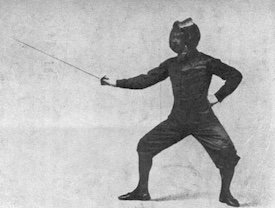Wild excursions up to 20khz., okay; but wild excursions from 20khz. to 50khz. and beyond, is not going to determine a cartridge's success in the market.
WRONG - it could not be wronger ( and I DO know "wronger" to be incorrect use of the English language ).
Do you actually use analog record playback machine at home or are you speaking only in general ? Two VERY different things...
If you were a regular listener to analog records, you would have known that the surface noise ( that can be clearly decomposed to tape hiss, ticks, pops, other unmentionables ) can vary a GREat DEAL - FROM THE SAME RECORD, BUT PLAYED TROUGH VARIOS PLAYBACK EQUIPMENT.
Records do not produce ticks and pop - ticks and pops are the consequence of record defects that excite (electro)mechanical resonances in phono stylus, cartridge, tonearm, platter, tonearm base , cables, phono preamplifier, etc - and, in general, the whole machine that is "record player" or "cartridge/tonearm/turntable/preamplifier" combination.
Go trough ANY decent, better phono cartridge review - subjective or, in recent times unfortunately extremely rare - objective phono cartridge review. One of the greatest recommendation any reviewer can give to any cartridge is the coveted "quietness in the groove". It is the Holy Grail in analog record playback... - and has been only recently seriously tackled on grander scale by most manufacturers.
We no longer have new , mint, unplayed records to listen to. Some are older than their listeners - myself included, at 58 years of age. Throughout their life, these records have been played by ??? equipment - some good, some bad, some atrocious. None of the cartridges whose design is now 10 or more years old can claim to have CONSCIOUSLY tackled this issue.
2-3 months ago, I conducted a VERY comprehensive test regarding stylus shape in an otherwise for all practical purpose identical cartridge. Using new, never played records, normally used but still good records - and those that would have been replaced by a mint copy ASAP - IF that was still available; which, of course, it no longer is in the majority of cases.
I did record ( 192/24 this time instead of the normally used DSD128 - for convinience of not having to convert the DSD to PCM for spectrum analysis, etc later ) both test signals from " over this test record went everything but a Russian tank " to mint test record . Ditto for the musical variety records.
Conclusion ? A super expected one, but now confirmed trough measurements/recordings. You can have GREAT sound from, a very good MM cartrifge equipped with an elliptical stylus - but ONLY IF your records are ALL mint. Now, with all the cleaning machines available, you can be sold a record in an immaculate outer sleeve, immaculate inner sleeve, appearing with no surface scratches, not even hairline... - BUT, the record has been played with a (elliptical ) stylus at too low tracking force and is - SHOT. Totally unlistenable with an elliptical stylus ....
I could bore you to tears with details of each stylus tip shape, frequency response of the cartridge to which that particular stylus is mounted to, etc.
BOTTOM LINE : THE BEST CHANCE FOR any RECORD ( UNLESS SCRATCHED SO BADLY TO CAUSE SKIPPING/JUMPING THE GROOVE, OF COURSE ...) HAS (drunroll ) :
The Cartridge with a Van den Hul/Micro Line ( or similar under different commercial names ) stylus shape and as wide and even/non-peaky frequency response as possible.
That rules out most MM cartridges, leaving only those MMs whose electrical parameters approach those of a typical MC cartridge.
Question for you: IF you were in a market for a new phono cartridge and there were two or more candidates to grace your turntable, which one would you choose - the one that every review on the planet hailed as being super quiet in the groove - or one of the rest where reviewers have been shying from commenting on this topic ?
Somewhat long reply - but hopefully answers WHY performance in phono cartridge WAY above 20 kHz is THE ultimate arbiter of quality and make or break of the deal.






















